New products at Crocus
by Sarah - July 4th, 2010.Filed under: Crocus, New Products.
New lines at Crocus

common box – ball £34.99
Position: partial shadeSoil: fertile, well-drained soilRate of growth: slow-growingOther features: contact with the sap may cause skin irritationHardiness: fully hardyA pair of these tightly clipped box spheres look great flanking a set of steps, a doorway or a path. One of our recommended plants, they’re perfect for planting in a large terracotta pot in a partially shady site, where the glossy, dark-green leaves provide all year foliage interest and structure. Box are happy growing in a sunnier spot, but the combination of dry soil and full sun may encourage poor growth and leaf scorching. If you have sandy soil it is best to keep them in a partially shady spot in the garden.Garden care: Ensure that the soil or compost is never allowed to dry out. Carefully cut back plants grown as hedges or topiary in mid- or late summer. Carry out rejuvenative pruning in late spring. After pruning apply a top-dressing of a balanced slow-release fertiliser such as blood, fish and bone (organic) or Osmacote (inorganic) around the base of the plant, ensuring that none touches the leaves or stems.
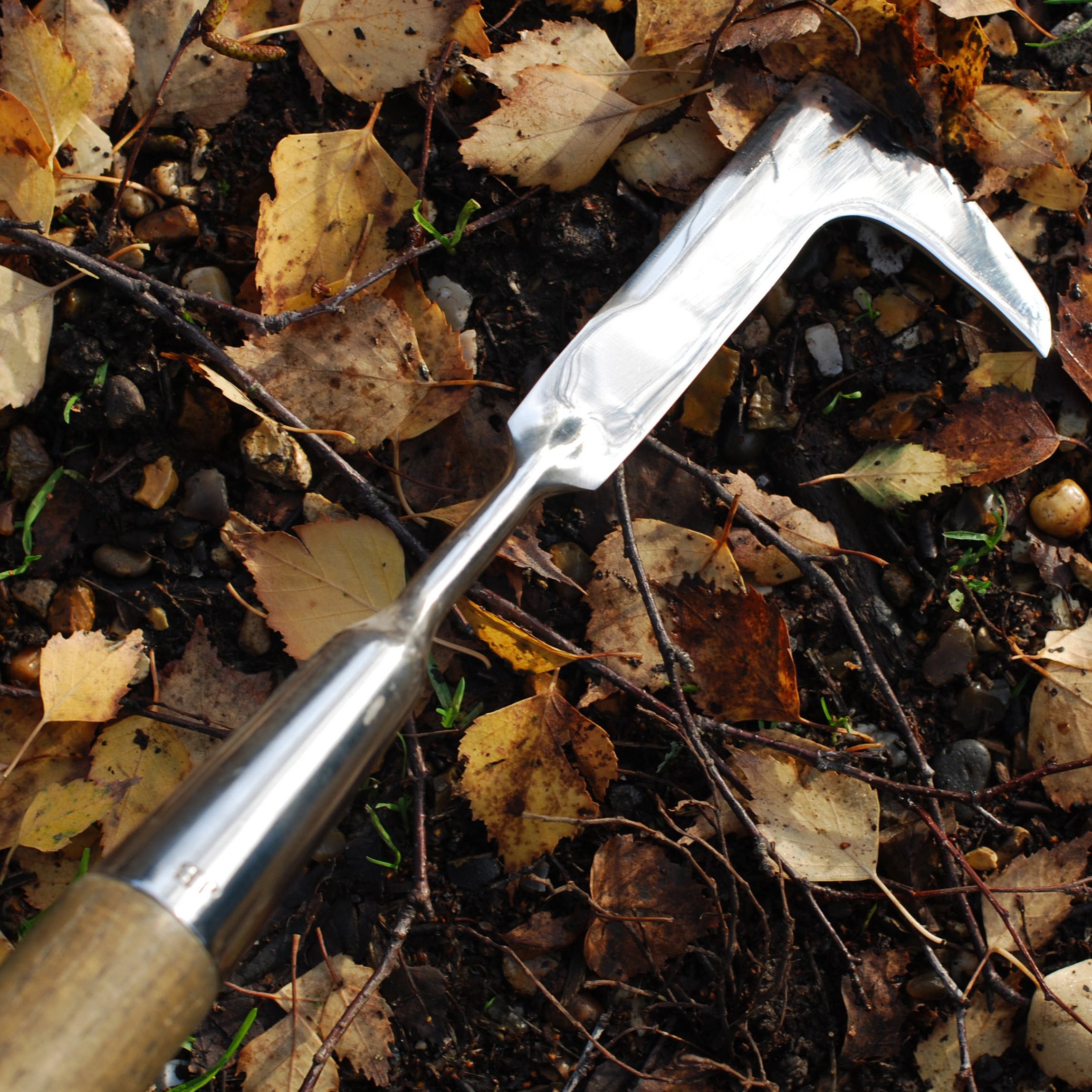
traditional-long-handled-weeding-knife-stainless-steel-by-joseph-bentley £19.99
The traditional range of garden tools has been inspired by the look, feel and quality of the tools offered in the early 1900’s. They are well crafted, manufactured with FSC timber and stainless steel.Designed to remove weeds and moss from between paving and tight spaces. Eliminates the need for bending and reduces back strain.Measurements:Handle length: 130cmHead length: 23cmTotal length: 153cm
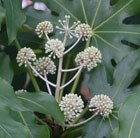
Japanese aralia £15.99
Position: full sun or partial shadeSoil: moist, well-drained soilRate of growth: averageFlowering period: September and OctoberFlower colour: creamy whiteHardiness: frost hardy (needs winter protection)A tropical-looking, evergreen shrub with gorgeously glossy, deep green palmate leaves. In autumn, creamy white flowers are produced in large panicles, which are often followed by round, black fruit. It makes a superb feature in an exotic-style garden, where the large leaves team well with bamboos and grasses.Garden care: Prune lightly in mid- to late spring, trimming shoots that spoil the symmetry. Protect plants from cold, drying winds
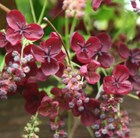
chocolate vine £12.99
Position: sun or partial shadeSoil: moist but well-drained soilRate of growth: averageFlowering period: March to MayHardiness: fully hardyA very pretty climber, this has beautiful maroon-chocolate flowers which have an exotic spicy fragrance with a hint of vanilla, and appear in spring. They stand out against the bright green, three-lobed leaves, which have a purple tinge in winter. This unusual semi-evergreen climber is excellent for training against walls or up a pergola, and in a warm summer, large sausage-shaped fruit can form.Garden care: Prune back after flowering where necessary.
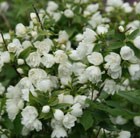
mock orange £9.99
Position: full sun or partial shadeSoil: fertile, well-drained soilRate of growth: average Flowering period: June and JulyHardiness: fully hardyIn June and July, the arching shoots of this deciduous shrub are smothered in deliciously fragrant, double, creamy-white flowers and mid-green leaves. On warm, summer evenings, the delicate, orange-blossom fragrance floats on the breeze. This compact, bushy, variety of the popular mock orange is perfect for a small garden of where border space is limited. An essential, low-maintenance shrub for a sunny mixed border, it can also cope with urban pollution and salt-laden air. Garden care: Mulch around the roots in spring with a deep layer of well-rotted garden compost or manure. Prune in late summer, immediately after flowering, removing one in four of the older stems to ground level.
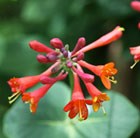
scarlet trumpet honeysuckle £8.99
Position: full sun or partial shadeSoil: fertile, humus-rich, moist, well-drained soilRate of growth: averageFlowering period: July to SeptemberHardiness: fully hardyThis honeysuckle has a real wow factor, with long, trumpet-shaped, vivid scarlet flowers from July to September, followed in hot summers by small red berries. Although it is unscented, the flower colour more than makes up for the lack of fragrance, and its handsome, semi-evergreen (or deciduous in colder winters) blue-green leaves provide valuable cover for a pergola or boundary wall. An unusual climber for a cottage-style garden. Garden care: Cut back established plants after flowering, removing a third of the flowering shoots. Apply a generous 5-7cm (2-3in) mulch of well-rotted compost or manure around the base of the plant in early spring.
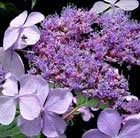
hydrangea £8.99
Position: full sun or partial shadeSoil: moist, well-drained, moderately fertile, humus-rich soilRate of growth: average Flowering period: June to SeptemberHardiness: fully hardyFlattened heads of beautiful, blue mauve flowers last from June to September and in autumn, the pointed, mid-green leaves, turn dusky red. On alkaline soils the flowers may become pink. This compact, deciduous hydrangea is perfect for small gardens in sun or partial shade. Hydrangeas give their best blue flowers on acidic soils with a pH 5.5. When grown on neutral soil, (with a pH of 7), the flowers will predominantly be pink, although you may also get blue or mauve blooms. If you want to make sure that your Hydrangea has blue-toned flowers, you will need to make sure your pH does not creep above 6.5. To lower the pH on a neutral soil, you can treat it annually with aluminium salts. It’s much harder however to alter the pH of limey (alkaline) soil, so it’s much easier to grow white or pink hydrangeas instead.Garden care: Hydrangeas do not like to dry out. In dry weather, soak the roots with a hose and the plant will usually recover. Remove faded flowerheads in spring after the danger of frosts, cutting back the flowered stems to a strong pair of buds. Take out misplaced or diseased shoots. Mulch young plants with a well-rotted manure or compost in spring. Once established, remove a quarter to a third of the shoots to the base of the plant.
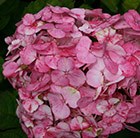
hydrangea £8.99
Position: full sun or partial shadeSoil: moist, well-drained, moderately fertile, humus-rich soilRate of growth: average Flowering period: August and SeptemberHardiness: fully hardyMasses of mophead flowers start out deep pink in June, maturing to red with a crescendo of burgundy by the end of the year on neutral or slightly acidic soil. On acid soil, the flowers will open blue or mauve. This upright, deciduous hydrangea is a gorgeous specimen plant for a sunny or partially shady border where the purple-flushed foliage will add colour. It looks particularly good planted with other hydrangeas. The flowerheads are also a popular choice for dried flower arrangements.Garden care: Hydrangeas do not like to dry out. In dry weather, soak the roots with a hose and the plant will usually recover. Remove faded flowerheads in spring after the danger of frosts, cutting back the flowered stems to a strong pair of buds. Take out misplaced or diseased shoots. Mulch young plants with a well-rotted manure or compost in spring. Once established, remove a quarter to a third of the shoots to the base of the plant.Hydrangeas give their best blue flowers on acidic soil of pH 5.5. When grown on neutral soil, with a pH of 7, flowers will predominantly be pink, although blue or mauve blooms can also be produced. To produce blue blooms, make sure your soil is acidic with a pH of at most 6.5. To make a neutral soil acidic you can treat it annually with aluminium salts. However it’s much harder to alter the pH of limey soil (alkaline), so it’s easier to grow white or pink hydrangeas.
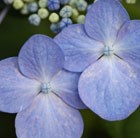
lacecap hydrangea (syn. Blue Wave) £8.99
Position: full sun or partial shadeSoil: moist, well-drained, moderately fertile, humus-rich soilRate of growth: average Flowering period: July and AugustHardiness: fully hardyOne of the most popular lacecap hydrangeas, this has flattened heads of rich blue, mauve or lilac-blue flowers in acidic or neutral soils, or pink flowers in alkaline soils. These appear from July to August over coarsely toothed, glossy, dark green leaves. It’s best in moist soil in partial shade and looks wonderful towards the back of a mixed or shrub border, particularly when planted with other hydrangeas. Hydrangeas give their best blue flowers on acidic soils with a pH 5.5. When grown on neutral soil, (with a pH of 7), the flowers will predominantly be pink, although you may also get blue or mauve blooms. If you want to make sure that your Hydrangea has blue-toned flowers, you will need to make sure your pH does not creep above 6.5. To lower the pH on a neutral soil, you can treat it annually with aluminium salts. It’s much harder however to alter the pH of limey (alkaline) soil, so it’s much easier to grow white or pink hydrangeas instead.Garden care: Hydrangeas do not like to dry out. In dry weather, soak the roots with a hose and the plant will usually recover. Remove faded flowerheads in spring after the danger of frosts, cutting back the flowered stems to a strong pair of buds. Take out misplaced or diseased shoots. Mulch young plants with a well-rotted manure or compost in spring. Once established, remove a quarter to a third of the shoots to the base of the plant.
alpine mint bush £8.99
cotoneaster £7.99
butterfly bush £7.99
himalayan blue poppy £7.99
mullein £7.49
cranesbill £6.99
cypress spurge £6.99
bergamot £6.99
button eryngo £6.99
kaffir lily £6.49
red valerian £5.99
bellflower £5.99
sowbread £4.99






